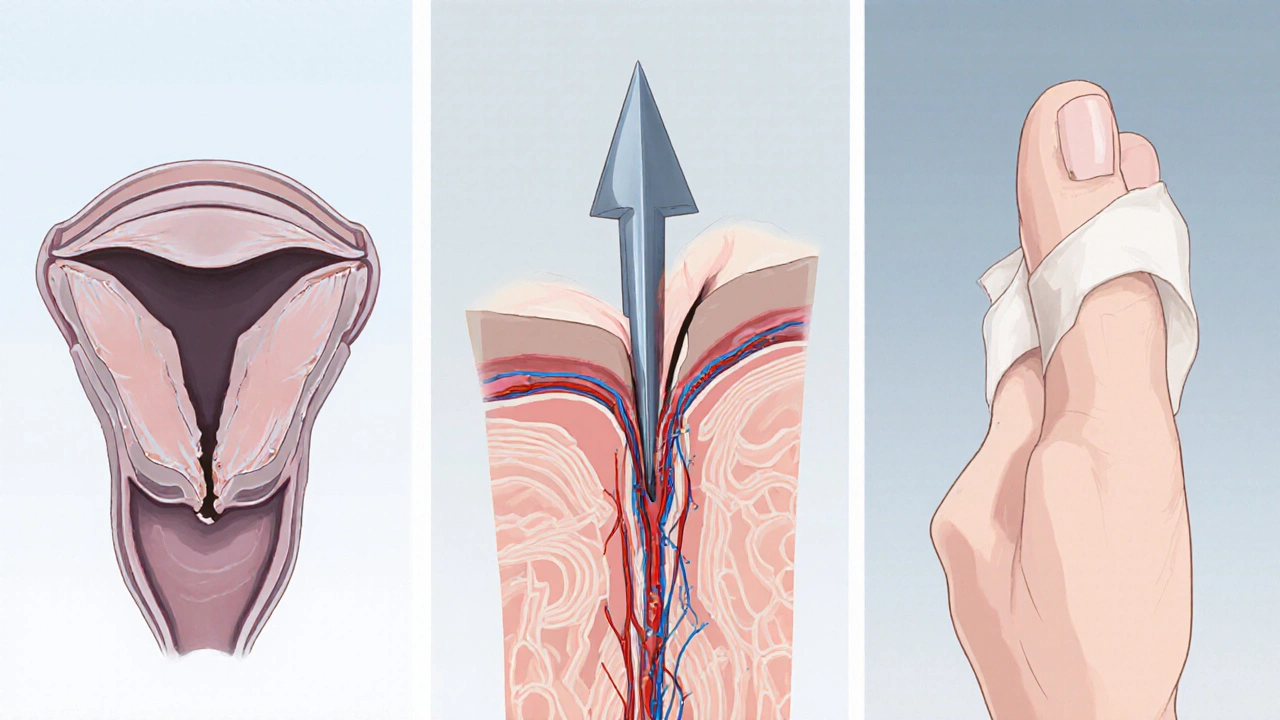Penile Trauma: Understanding Causes, Care, and Recovery
When dealing with penile trauma, any injury that damages the penis' tissue, blood vessels, or nerves. Also known as genital injury, it demands quick medical attention to avoid permanent complications such as loss of function or chronic pain.
Penile Trauma can be broken down into a few well‑defined injuries. The most dramatic is penile fracture, where the tunica albuginea tears after a blunt blow during an erection. A snapping sound, rapid swelling, and immediate loss of erection are classic signs. Another frequent issue is urethral injury, which occurs when the tube that carries urine and semen is torn, often alongside a fracture. Symptoms include blood at the tip of the penis, pain during urination, and difficulty voiding. Both injuries share a need for emergency evaluation—delaying care raises the risk of infection, scarring, and later erectile dysfunction. In fact, untreated penile trauma is a leading cause of long‑term sexual health problems.
How These Injuries Interact with Overall Sexual Health
Beyond the immediate pain, penile trauma can impact sexual health in several ways. Scar tissue may bend the penis, creating curvature that hinders comfortable intercourse. Nerve damage can dull sensation, making arousal harder to achieve. Psychological effects—anxiety, embarrassment, or fear of re‑injury—often accompany the physical issues, further feeding into erectile dysfunction. Addressing these layers requires a team approach: urologists repair the structural damage, therapists help manage the emotional fallout, and sometimes medication or vacuum devices are added to restore function.
Doctors typically start with a physical exam, followed by imaging such as ultrasound or retrograde urethrography to map the injury. Surgical repair is the gold standard for fractures and most urethral tears, aiming to realign tissue and stop bleeding. Post‑op care includes antibiotics, pain control, and a period of abstinence from sexual activity—usually several weeks. Rehab may involve gentle stretching, pelvic floor exercises, and counseling. When the acute phase passes, many patients regain full function, but close follow‑up is essential to catch any lingering issues early.
In the list below you’ll find detailed articles that dive deeper into each of these topics—comparisons of treatment options, tips for managing recovery, and advice on preventing future problems. Whether you’re looking for a quick overview or a step‑by‑step guide, the resources ahead will give you the practical insight you need to navigate penile trauma and its effects on your health.

Penile Reconstructive Surgery: How It Repairs Traumatic Injuries
Learn how penile reconstructive surgery restores function and appearance after trauma, with clear explanations of techniques, recovery, risks, and how to choose a specialist.
